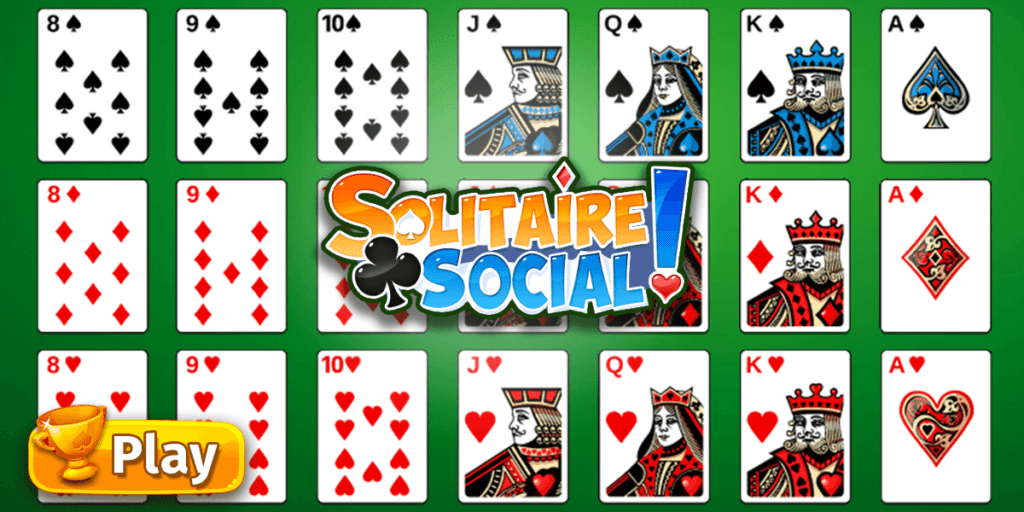- 1 Basic Solitaire Tips, Hints, Strategies
- 2 Benefits Of Playing Solitaire
- 3 Solitaire Strategies
- 3.1 Know the Rules
- 3.2 Hold Off on the Hand
- 3.3 Start With the Biggest Stacks
- 3.4 Do not Finish the Stacks
- 3.5 Leave Your Options Open
- 3.6 Red King or Black King?
- 3.7 Pay Attention to Suits
- 3.8 Leave the King
- 3.9 Aces and Twos Go Straight to the Foundation
- 3.10 Change Your Strategy
- 3.11 Do not Be Afraid to Undo
- 3.12 Expect Unwinnable Games
- 4 So Many Games, So Many Strategies
- 5 Solitaire Strategy – FAQs
Basic Solitaire Tips, Hints, Strategies
According to most accounts, the game of solitaire, in some form or another, dates back to the 18th century. That means that players have had a few thousand years to produce some pretty effective strategies for solitaire. Players use all different techniques and employ a variety of game plans. If you were to ask for the best solitaire strategy, you are likely to get a different answer from anybody that you ask. The only way to find solitaire strategies that work for you is to try a few for yourself.
It should be noted that these methods are not mutually exclusive. In fact, most are meant to be used together. This walkthrough primarily provides solitaire strategy tips rather than comprehensive strategies. These are basic ideas to keep in mind while playing, with a strong emphasis on basic. Learn more in our guide and use some solitaire tricks!
Benefits Of Playing Solitaire
Playing this game offers many benefits, including
1. Calming Your Mind
Solitaire puts you in a meditative state as you focus on arranging cards in the foundation piles in the correct sequence. Your cards can be shuffled in endless ways, and sorting them to get the desired results introduces a lot of calm and helps you focus.
2. Entertainment
It is a good way to avert boredom. You can play it when you’re alone and have nothing to do or with someone if you wish. In this game, there are plenty of opportunities to make and correct mistakes, so you can have a lot of fun.Memory Building
Solitaire requires memorization of different rules, card colors, suits, numbers, etc., to get the desired sequence. Regular gameplay can help improve your memory, which is beneficial in many other situations.
3. Educational
Solitaire is a practical way to learn the value of patience and paying attention. It requires significant patience and understanding to win, so regular gameplay will help you build these values.
4. Encourages Competition
You can play Solitaire with others and see who has the better skills. Playing with others challenges you to improve your skills, which is a valuable trait for other activities.
Solitaire Strategies
There are many Solitaire hints and tricks to imbibe to become a professional player. The Solitaire tricks and tips for Playing Solitaire include;
Know the Rules
When we say basic ideas or stunts, we really do mean basic. It goes without saying that you should be very familiar with the rules before playing, but this rudimentary step is worth mentioning because it’s easier than you think for some of the more obscure rules to slip your mind. You could consider yourself stuck when really, you are just unaware of all your current options.
Solitaire has been a staple of personal computers for years now, so everyone thinks they know the game inside and out, but you would be surprised at what you might not know.
Another reason for mentioning this is all of the versions of solitaire available these days. There are plenty of variations, cheats, and twists on the standard game, so you will want to be familiar with any new rules and know what is a good score in solitaire.
Hold Off on the Hand
While it may be tempting to start sorting through the hand right away, it is a better idea to tackle the columns first. The more you can shuffle around and arrange on the actual board before drawing out of the hand, the better. Once the hand cards get involved, it only gets more complex, and drawing cards right away is only going to complicate matters. One step at a time!
Start With the Biggest Stacks
We can all picture the traditional layout in our minds, with the piles getting bigger as your look from left to right. These are your tableau piles. If you have multiple cards that you can play, it is a good idea to start with the biggest pile that you can work off. The bigger the pile is, the more cards there are to reveal, and the more cards revealed, the easier it is to start moving them to the foundation piles.
Do not Finish the Stacks
Everyone loves finishing a pile and having that empty tableau spot staring them in the face. However, you want to keep the seven piles as even as possible. This gives you access to the most cards at one time. If you have two or three giant piles, there are going to be a lot of buried cards that you cannot reach. If you have seven even piles, though, not only does that give you at least seven available cards but shifting things around to get to those buried cards is going to be easier on account of the options available.
Leave Your Options Open
There will be plenty of times, especially in the early game, where you will have multiple moves sitting in front of you. Do not just make a move because you can make it. Moving cards for the sake of it is a good way to dig yourself into a hole, at which point you can forget about winning the game. Always think ahead.
It can often be difficult to know just where a certain move will take you, so a good rule of thumb is to make the move that will leave you with even more moves to make. You always want as many options available as possible, so look at your top cards and decide which move will open up the most options.
Red King or Black King?
Pay Attention to Suits
The foundation spots are dedicated to the 4 suits in cards – clubs, spades, hearts, and diamonds – so it is a good idea to contain suits to specific piles when you can. This is not mandatory, of course, and if you need to mix spades and clubs or hearts and diamonds that is not going to kill your chances of a victory. That being said, the more a row sticks to the same two suits (because the colors need to alternate, it will always be at least two suits), the easier it will be to fill the foundation spots once you near the end.
Leave the King
This goes hand-in-hand with not finishing the stacks, but if you simply can’t resist the urge, at least leave the King down. This way you already have the foundation laid to start another stack without having to wait for another King to pop up. More importantly, you can only move a King to that empty space, so that entire row will remain useless until you uncover one or pull one from the cards in the stock.
Aces and Twos Go Straight to the Foundation
Aces and Twos do not help a lot in solitaire, because their placement is so limited. So, when you get an Ace or a Two (especially an Ace, obviously), the best move is usually to move it straight to a foundation pile. With Aces this is easy, because they are the building block of the pile, but a Two you may have to hop around with until you get the matching Ace laid down.
Change Your Strategy
If a certain strategy just is not working, do not be afraid to change it up. None of these strategies are mandatory. You can clear columns, mix suits, and work from the smallest stacks first and still end up winning the game. These are tips, not rules, so use them as you see fit. Not every tip will be applicable. As silly as it sounds, the best strategy for solitaire is whatever works!
Do not Be Afraid to Undo
Expect Unwinnable Games
From a technical standpoint, every single game of solitaire is winnable. All of the necessary cards are there. However, unless you are psychic, you are going to make the wrong move from time to time and end up in a situation where the game cannot be won. You cannot know what the face down cards are, so sometimes you will just have to take a chance. There are going to be elements of luck and chance in every game of solitaire so you cannot get discouraged when you do not clear every board.
By using this embedded online Solitaire game you may practice all the advices above.
So Many Games, So Many Strategies
There are several variations of the classic solitaire formula. TriPeaks, Spider, Pyramid, and FreeCell are just a few of the more popular twists on the game. At heart, though, they are all solitaire. A lot of the strategies discussed above will be applicable, at least partly, to all the different forms of the game out there. Do not be afraid to experiment to figure out which strategies work for which variants. There are plenty of resources out there to help you improve your game. After all, to answer our initial question: yes, there is a strategy for solitaire with hints.
Solitaire Strategy – FAQs
Is there an algorithm for Solitaire?
No, there isn’t a single algorithm that lets you solve Solitaire. Many factors affect your gameplay, such as how the cards are shuffled. For a 52-card deck, there are 52! (8 × 1067) ways to shuffle it, so there’s no single algorithm that can determine how to arrange the cards in the foundation piles in the correct order. However, there are many tips for Solitaire that helps you play effectively.
What is the best strategy for Solitaire?
The most effective strategy is to be a good observer. Have a bird’s eye view of the tableau to determine the next moves to help you arrange cards in the desired sequence, starting with an Ace and beginning with a King. If you’re playing with another person, watch their moves to determine what your own next moves will be.
Is there any skill in Solitaire?
Yes, Solitaire is a game of skill and strategy. You must observe the tableau and think deeply about the next moves to help you achieve your goal. The more you play, the more you build up your skills to become a professional player. Solitaire depends more on skill than luck, especially when playing with someone else.

